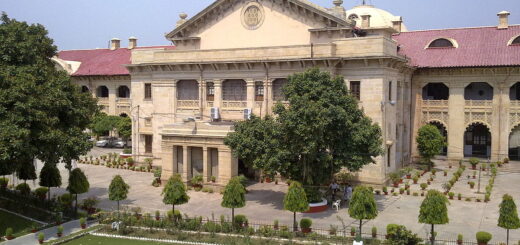Article 29 and 30 – Rights of Minorities
The common refrain from relatives, such as the living room uncle or the gossiping aunt, often suggests that reservations are detrimental to our nation, with the implication that the majority bears the brunt of this policy in terms of access to education. However, it is essential to pause and consider whether the government genuinely prioritizes the educational and cultural rights of minority communities. To address this inquiry, it is necessary to first examine the specific cultural and educational rights afforded to minority groups and the manner in which governmental bodies and the judiciary engage with legal issues related to these rights. This article will provide a comprehensive analysis of these dimensions.
Synopsis:
- Introduction
- What is Minority
- Rights of Minority
- Article 29
- Distinction between Article 29(2) and Article 15(1)
- Minoritie’s Educational Institutes
- Relation between Article 29(1) and 30(1)
- Conclusion
- Introduction
The rights of minorities in education are safeguarded by Articles 29 and 30 of the Indian Constitution. Article 29 affirms the entitlement of minority communities to maintain their language, script, and cultural heritage, whereas Article 30 confers upon them the authority to create and administer their own educational institutions. These constitutional provisions are designed to promote cultural diversity and to mitigate discrimination within educational environments. - What is Minority
Article 30 of the Constitution addresses two categories of minority communities: Linguistic and Religious. However, while it delineates these categories, the government has not provided an official definition of the term “minority.” Insights can be gleaned from various constitutional provisions and governmental reports. Article 29(1) protects the rights of minority communities, asserting that individuals possessing “a distinct language, script or culture of its own” are entitled to preserve their heritage. Regarding religious minorities, Section 2(c) of the Minorities Act identifies five religions as minority communities: Muslims, Sikhs, Christians, Buddhists, and Zoroastrians (NCMA).
The text suggests that communities characterized by unique languages, scripts, or cultures are classified as minorities. However, in subsequent legal cases, such as Bal Patil v. Union of India and the Islamic Academy of Education v. State of Karnataka, courts have considered additional criteria, including economic welfare, to determine minority status.
- Rights of Minority
Certain rights are established to protect the interests of minority communities. Article 29 guarantees that every individual residing in India has the right to maintain a unique language, script, or culture, and mandates that no state educational institution or any institution receiving state funding shall engage in discrimination based on race, caste, creed, or similar factors. Article 30 further affirms the rights of minority communities concerning educational institutions and explicitly prohibits any form of discrimination against them.
In discussions surrounding reservations and special provisions for minority communities, some critics have argued that these measures serve merely as a form of ‘cushioning.’
However, in the case of The Ahmedabad St. Xaviers College vs. State Of Gujarat & Anr, Justice Khanna articulated that such provisions are essential to ensure that “no segment of the population feels that some are first-class citizens while others are relegated to second-class status.” He emphasized that the majority of the Fundamental Rights enshrined in the Constitution are designed to protect both majority and minority rights equally.
In the TMA Pai case, the judge referenced the advisory opinion of the Permanent Court of International Justice regarding Minority Schools in Albania, which underscored the necessity of provisions that assist minority groups in preserving their unique cultural identities and religious practices. Justice Khanna remarked that “the objective of such protection is to enable minority communities to maintain the characteristics that set them apart from the majority.”
In the Kerala Education Bill case, Chief Justice Hidayatullah articulated that while Article 30(1) provides a broad safeguard for distinct languages and scripts, it also encompasses the right to make educational choices. Consequently, the Act retains its significance even if the primary objective of an institution is not solely the preservation of minority culture; it equally pertains to institutions established and managed by minority communities that also admit students from other backgrounds.
- Article 29
The Fundamental Rights enshrined in the Constitution of India guarantee the basic rights of Indian citizens. There are six fundamental rights outlined within this constitutional framework. Articles 29 and 30 specifically address the cultural and educational rights afforded to Indian citizens. The primary purpose of Article 29 is to safeguard the cultural heritage of minority groups in India. Given India’s vast diversity, this characteristic serves both as a strength and a challenge. The intricate nature of the nation necessitates the application of Article 29, which acts as a protector of these rights for minority communities, thereby aiding in the preservation of marginalized groups. This legal provision encourages individuals to protect, promote, and sustain their cultural identities. Article 29 was enacted on April 26, 1975, and is located within Chapter 3, titled ‘Fundamental Rights,’ under the Department of Personnel and Administrative Reforms. This right is conferred exclusively upon citizens of India residing within its territory. In light of India’s rich tapestry of cultures and traditions, Article 29 empowers every citizen to uphold their cultural practices and associated avenues.
Article 29(1) of the Indian Constitution is designed to safeguard the rights of minority groups, particularly concerning their cultural heritage. This provision is considered an absolute right for these groups and is not subject to reasonable restrictions in the interest of the general public. Conversely, Article 29(2) focuses on the protection of individual rights, ensuring that every citizen’s rights are upheld independently of their community affiliations. Collectively, Article 29 serves to protect the interests of both religious and linguistic minorities.
According to the Indian Constitution, minorities are classified solely into two categories: Religious and Linguistic. This Article does not address minorities based on caste or representation. The Supreme Court has clarified that the scope of this Article extends beyond just minorities. The phrase “section of citizens” indicates that it encompasses both minority and majority groups. - Distinction between Article 29(2) and Article 15(1)
Article 29(2) and Article 15(1) exhibit notable similarities in their prohibition of discrimination based on caste, race, sex, and other characteristics, often leading to perceptions of them as mutually exclusive. However, a significant distinction exists between the two. Article 15 encompasses a wider scope in addressing discrimination across various grounds, whereas Article 29 specifically addresses the restitution for individuals who have experienced discrimination in state-run educational institutions during the admission process. Education plays a crucial role in the development and advancement of specific communities. A well-educated individual is better prepared to engage in public service and pursue employment opportunities. In the absence of educational resources, a community risks being culturally and economically marginalized. Therefore, it is essential that minority communities have access to education and receive appropriate remedies for discrimination. - Minoritie’s Educational Institutes
The Constitution, under Article 30, grants minority communities the right to establish and administer educational institutions, thereby safeguarding them against discriminatory practices related to government funding. Article 29(1) affirms that every citizen has the right to preserve their unique language, script, or culture. In contrast, Article 29(2) offers broader protections applicable to all citizens, rather than being specifically designed for minority groups. A significant point of contention in judicial discourse has been the extent of autonomy that minority communities possess in the governance of these institutions. This debate culminated in the landmark case of T.M.A. Pai Foundation v. State of Karnataka, which was adjudicated by an extensive 11 Judge Bench. Currently, there is a prevailing agreement that while governments may impose regulations on these institutions, such oversight must aim to promote academic excellence and should not undermine the fundamental character of the minority institution. - Relation between Article 29(1) and 30(1)
Article 29(1) safeguards the rights of individuals belonging to communities characterized by unique languages, cultures, and scripts. Similarly, Article 30(1) ensures the rights of minorities concerning the establishment and administration of educational institutions. Consequently, both provisions support the rights of minority groups to create and oversee their own educational establishments. The primary distinction lies in Article 29(1)’s effort to delineate the identity of minority communities. Given the substantial similarities between the two articles, it is a common misconception that individuals can seek protection solely under one of them. However, in the case of St. Xaviers College v. the State of Gujarat, it was clarified that Articles 29(1) and 30(1) are not mutually exclusive. - Conclusion
In conclusion, Articles 29 and 30 safeguard the rights of minority groups to preserve their cultural heritage and exercise educational independence. By promoting non-discrimination and equal access within state-funded institutions, these articles create a balance between the rights of minorities and the regulatory responsibilities of the state. This legal framework underscores India’s dedication to pluralism and equitable education.



